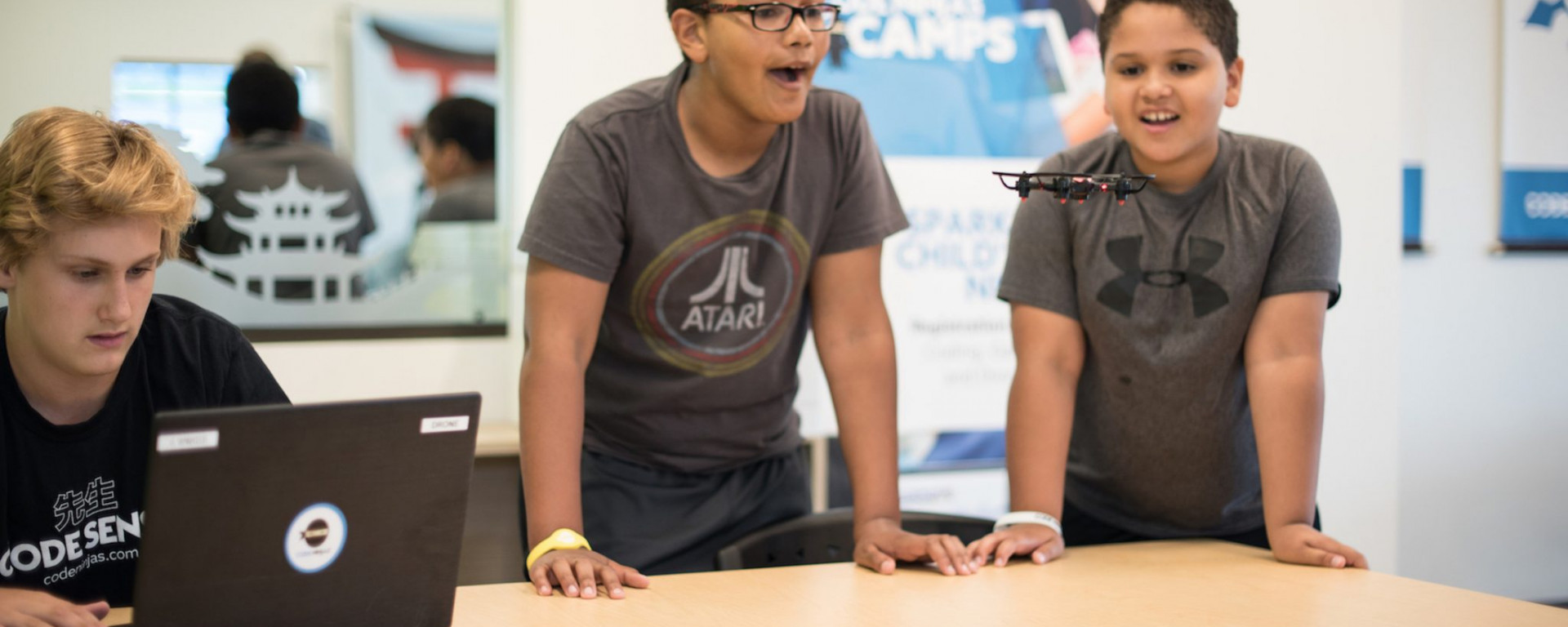This summer holiday, my son was looking to learn to code. I searched for local kids coding opportunities, workshops, or classes and found one running at our local library. It was fully booked and the waiting list was overrun. What if there were more local education centres to interest our children in useful skills for modern employment. Then, I got a call from Code Ninjas, I invited them to write the article below. – Adam
Children’s screen time is always a hot topic for parents these days. How much is too much, what’s the difference between ‘good’ and ‘bad’ screen time and how do you find the right balance? At this time of year, in fact, during any school holiday, it’s something that becomes even more of a stressor. Copse readers have already been offered comprehensive tips on how to keep their kids safe on the internet so I’m not going to labour that point. Instead, I want to talk about the fact that screen time is almost inevitable and how to make the most out of it by managing it effectively.
I personally think that instead of categorising screen time as ‘bad’, parents should instead say to themselves, ‘how can we put that screen time to better use?’ As a former coder, entrepreneur and parent, I feel confident that it’s all about turning screen time into something productive. I believe – and have seen first-hand – that through kids coding programmes like Code Ninjas, screen time comes with a host of benefits.
Everything about Code Ninjas is built around fun. Kids between the age of 7 and 14 learn how to code by building video games, robotics and drones – they love it! It’s fun, it’s loud – it’s exciting. Our kids’ coding centres are called Dojos, teachers are called Senseis and our Ninjas progress through a game-based curriculum made up of nine belts, just like martial arts. As well as coding, children gain complementary skills – such as logic, problem-solving and teamwork – that they’ll need for the jobs of the future.
Instead of simply scrolling on social media or scouring YouTube for funny videos, encouraging children to use their screen or device time to learn how to code is something that parents can feel good about. Rather than at-home, secluded screen time, encourage your children (although from my experience, it’s often them encouraging you!) to become involved in a regular group or centre-based coding club. There are a multitude of benefits to this type of learning, many of which directly address the usual concerns we have as parents.

Worry: lack of interest in more traditional subjects
Learning to code in a group environment is complementary to other STEM and non-STEM subjects. The supplementary skills learnt – including teamwork, communication and problem solving – benefits students both in their academic and personal development. A great kids’ coding centre, such as Code Ninjas, will foster an environment of collaboration and encourage kids to share ideas and solutions, just like real coders! All of which helps kids to build confidence and independence in their own learning, whilst having fun.
Worry: lack of exercise/obesity
Remember that screen time doesn’t always mean sitting in front of a computer! Building drones and robots gets kids up and out of their seats so, when choosing a provider, look for evidence that sessions are active and engaging. Silence isn’t golden – if you can’t hear the kids having fun, chances are, they aren’t.
Worry: isolation/addiction
Learning to code in a destination setting, particularly a group environment, is a great way for kids to make friends. A good provider will be passionate about their community so, check how sessions are structured and avoid ‘classroom’ style setups. Ask how progression is acknowledged and celebrated – it should be something that everyone takes part in. A great example from Code Ninjas is that our kids’ coding centres, or Dojos, are parent-free zones! Kids are encouraged to make friends and work together. And when someone progresses, colour wristbands are awarded in ‘belt-up’ ceremonies that the whole Dojo takes part in. Inclusion and collaboration are big drivers in the coding community.
Worry: fighting for your child’s attention
When kids learn something new – and fun – they are inspired to share it with their parents and friends. Look for a kids’ coding centre or a provider that has a system in place to help your child share their achievements and creations with you when they get home. Can they show you what they have built? What game they have designed? Can you play it with them? By showing interest and celebrating your child’s achievements with them, you can create a real sense of positivity around this kind of screen time over others. Not to mention you are also strengthening your relationship with them.
Worry: staying safe online
Coding programmes rarely require internet browsing. Screen time and online time have come to mean the same thing, when they are in fact, different. In the case of Code Ninjas, learning to code by building games that they already know and love, is a great way to capture their imagination and attention – without a social media account in sight! They are also not connected to anything that would allow someone outside of the Dojo to communicate or interact with them, so they are not in danger of strangers online.
In today’s digital world, you can’t escape screen time. What we can do, as parents, is take a more realistic approach and instead of letting our children passively consume media, we can leverage screen time for future benefit. Whilst our kids are learning and having fun!
David Graham is the founder and CEO of Code Ninjas, a world-leading kid’s coding franchise. For more information about Code Ninjas, to find out when a centre might be opening near you – or if you’re interested in opening one of your own – visit www.codeninjasfranchise.co.uk.
